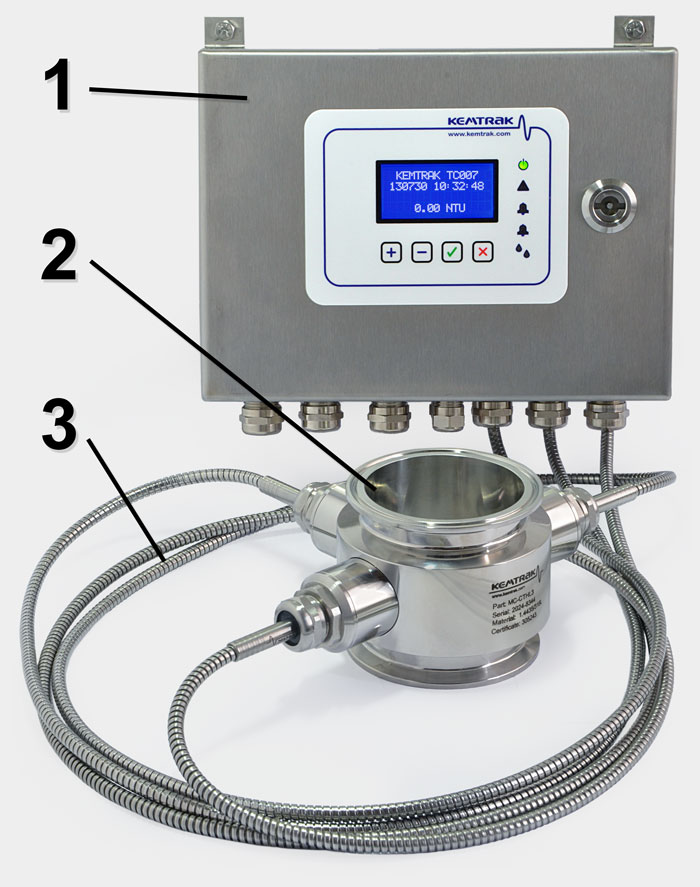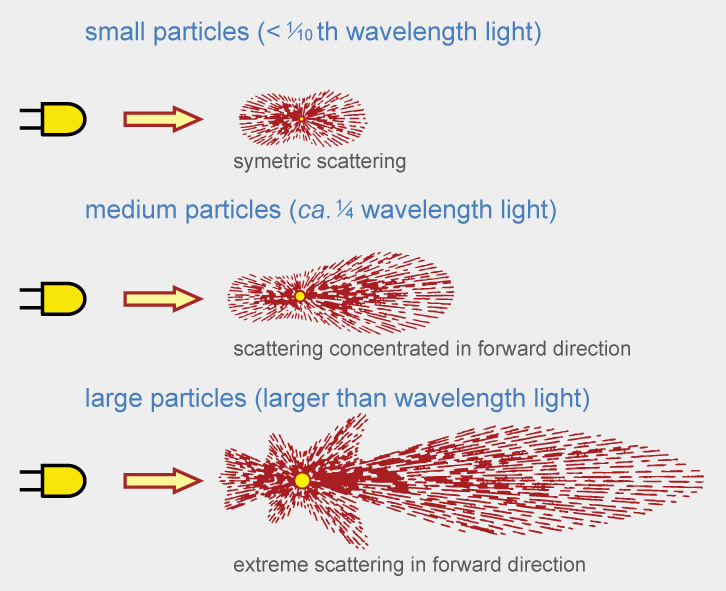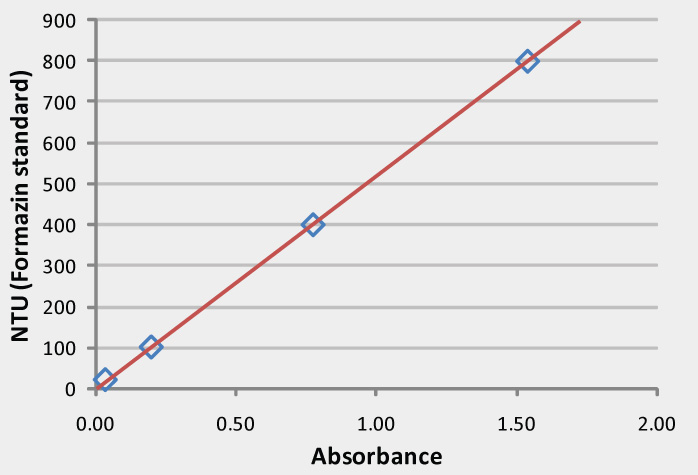Hoe werkt het
The Kemtrak TC007 turbidimeter consists of three components:
- Control Unit. The control unit contains all electronics including NIR light source and detectors.
- Flow Cell. In-line (flow through) measurement cell with an optional 90° port for measurement of scattered light (ISO7027:1999(E)).
- Fibre Optics. Industrial grade fibre optic assembly connects the control unit to the flow-cell.
The configuration shown here is a DN80 TriClamp (DIN 32676) measurement cell with stainless steel fully interlocked fibre optic assembly. Both measurement cell and fibres can withstand 250°C (482°F).
Meetprincipe
Turbidity is a measure of the lack of clarity or “cloudiness” of a fluid caused by undissolved particles. Turbidity is an optical property that causes light to be scattered and absorbed rather than transmitted in straight lines through the sample.

As light passes through a sample containing suspended solids, the particles absorb the light energy and re-radiate the energy in all directions. Particle shape, size, color and refractive index determine the spatial distribution of the scattered light by the particle. Particles smaller than the wavelength of light (e.g. bacteria) scatter light in equal intensities in all directions, while particles larger than the wavelength of light result in a greater forward scattering.
As the light scattered in the forward direction is variable depending upon the particle size, the measurement of light transmitted through the sample will yield variable results. This problem is eliminated when turbidity is measured at right angles to the incident light beam – an angle considered to be very sensitive to light scatter by particles in the sample. Both the International Standard (ISO7027:1999(E)) and North American EPA Method (1801.1) defining the measurement of turbidity requiring scattered light measurement at 90°.


Modern turbidimeters use a technique called nephelometry, which measures the amount of light scattered at right angles to an incident light beam. The Kemtrak TC007 turbidimeter complies to International Standard ISO7027:1999(E), a European standard primarily defining the allowable turbidity in drinking water.
Both transmitted light and scattered light at 90° is measured and mathematically combined using a ratio algorithm to calculate the turbidity of the sample. The dual detection system and ratio algorithm provides a turbidity measurement that has significantly better performance with colored and/or light absorbing samples.
A 850nm long life LED light source is used to provide reliable turbidity measurements from 0.01 to over 4 000 NTU depending upon the configuration of the optical measurement cell or probe. The Kemtrak TC007 is an instrument of high accuracy with long-term calibration stability.














